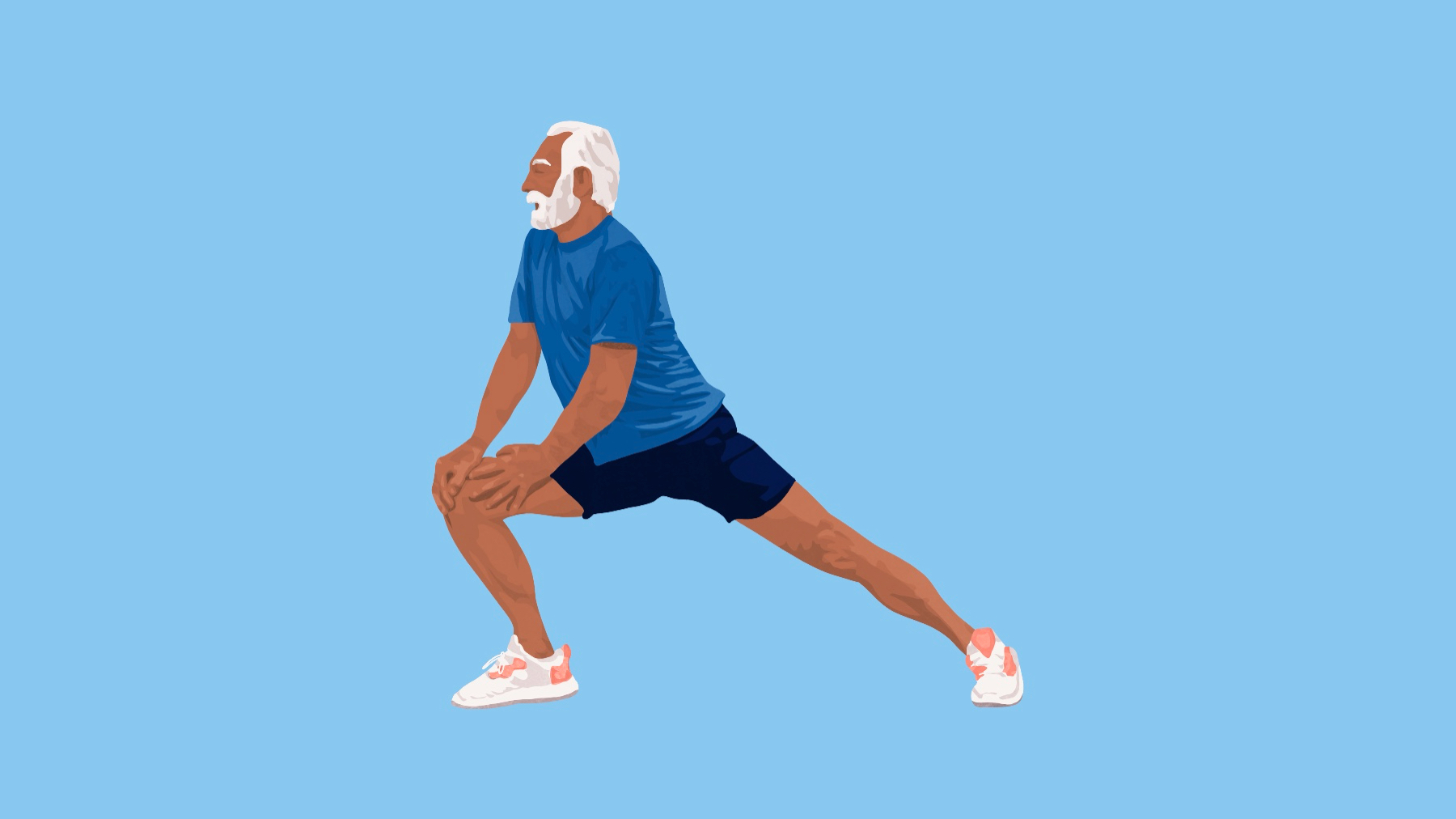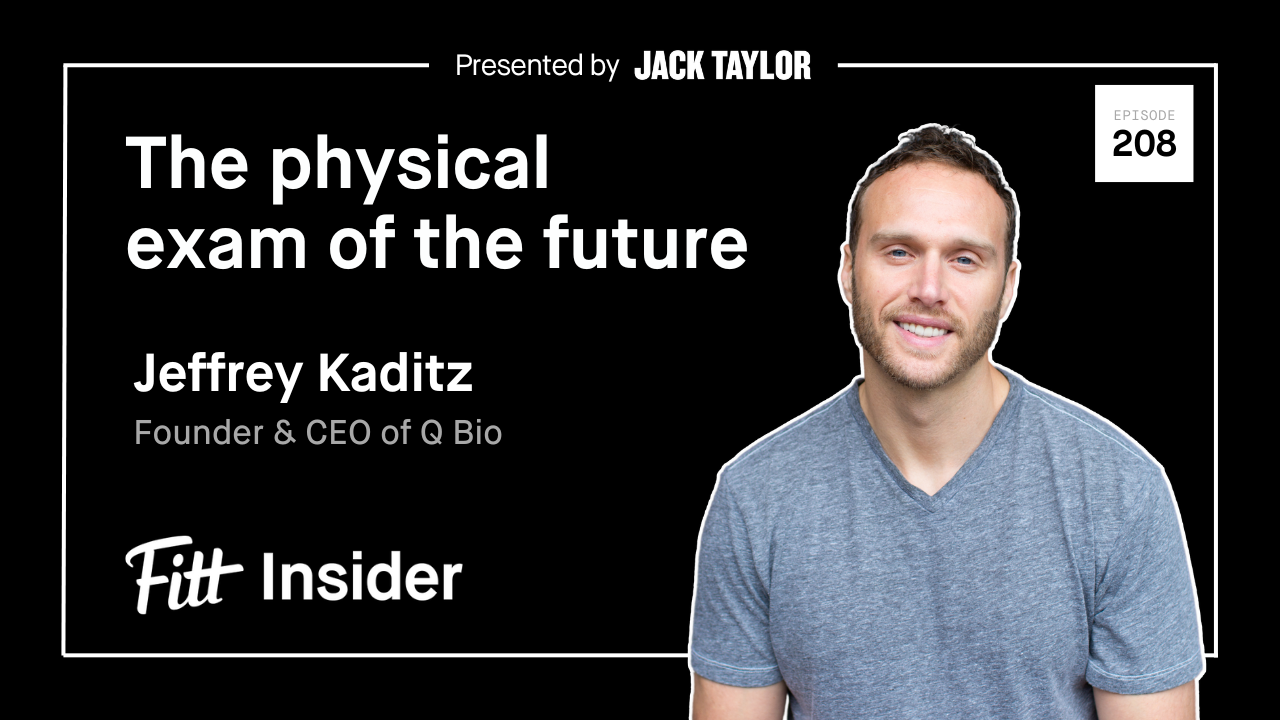Issue No. 255: Big Stretch


Infrastructure tools for developers in connected health.
Stretching out might be the first step to moving more.
Stuck in Place
Americans aren’t moving enough, with over 70% missing weekly physical activity benchmarks and a quarter completely sedentary.
Compounding the problem, the quality of our movement is also suffering:
- The average American sits 6.5+ hours/day, and office workers up to 15 hours.
- Prolonged sitting increases low back pain and impairs cognitive function.
- 50% of US adults report a musculoskeletal (MSK) condition, costing $380B in healthcare.
Interestingly, 29% of people experiencing low back pain believe stress is the root cause, and 26% pin it on weak muscles.
And, while strength training can decrease psychological stress and reduce MSK symptoms — chronic pain, limited mobility, and deconditioning prevent would-be exercisers from partaking.
Even the physically fit are hurting, with one in five Americans reporting exercise-related pain and 79% of runners sustaining regular injuries, most of which are preventable.
Mindful movement. An alternative to max-effort exercise, the desire to feel good and move well has given rise to lower-intensity workouts.
- Nearly half of Americans say stretching and restorative yoga are very important.
- The average fitness routine now consists of 40% low-intensity training.
- More than a third say they prefer low-intensity/impact training exclusively.
But with the recovery craze in high gear, operators are packaging stretching as an antidote to life’s stressors.
Stretching-as-a-Service
While the benefits of static stretching are debatable, there’s no denying a sedentary lifestyle leads to poor posture, tight muscles, and reduced mobility.
And, science aside, people like the way stretching makes them feel — making it an easy sell.
Limber up. In September, health club operator Life Time debuted stretching services, including one-on-one sessions, breathwork, and recovery tech.
Likewise, mobile personal training service GYMGUYZ added assisted stretching, with both brands touting injury prevention and stress relief.
And more recently, barre3 acquired The Barre Code to capitalize on the rise of stretching x strength.
Helping consumers stay loose, gyms and studios are promoting personalized prehab, 1:1 therapy, and group mobility training.
- This year, Xponential Fitness-owned franchise StretchLab opened its 300th stretching studio, with 800 more planned globally.
- Rival concept Stretch Zone eclipsed 300 studios and secured new funding to speed expansion.
- Combining corrective exercise, physiotherapy, and massage, Myodetox is adding to its 15 studios across Canada and California.
Big-box clubs are also leaning in, with 24 Hour Fitness piloting mobility training and EōS Fitness scaling assisted stretching.
Roll out. Operators see stretching as a low-overhead, easily scalable model requiring little equipment and no experience, making it widely accessible and primed for growth.
Punchline: Assisted stretching blurs the line between fitness and physical therapy, taking advantage of demand for Pilates-like low-intensity workouts and restorative wellness. Its necessity remains unclear, but if feeling good is a prerequisite to moving more, an extra stretch can’t hurt.
🎙 On the Podcast

Q Bio’s founder & CEO Jeffrey Kaditz talks democratizing personalized, preventative healthcare.
An engineer and serial entrepreneur, Jeffrey has tackled everything from fintech to mobile gaming. Now, he’s revolutionizing healthcare at Q Bio, building a Star Trek-esque platform that promises to help doctors detect disease and diagnose root causes earlier.
We also cover: Q Bio’s clinical digital twin technology, the automated physical exam of the future, and shortcomings of traditional whole-body MRIs.
Listen to today’s episode here.
💪 Nike launches strength training equipment
Flexing its fitness ambitions, the apparel giant debuted Nike Strength.
New gains. With the goal of supporting “elite and everyday athletes on their training journeys,” the collection includes:
- Dumbbells (5–100 lbs) and kettlebells (9–88lbs)
- Barbells and bumper plates, including recycled rubber “Grind” weights
- Full and half squat racks, benches, dumbbell storage, and more
Currently available direct-to-consumer online and at select DICK’S Sporting Goods and Scheels locations, Nike is also accepting wholesale orders — signaling plans to outfit gyms, studios, and other commercial sites.
Just doing it. Nike is all-in on fitness and wellness, with equipment joining a growing list of developments.
In August, the company announced Nike Studios, planning to open its own boutique fitness studios. Now, in addition to outfitting its gyms with custom-branded equipment, Nike Strength becomes a standalone business.
The list goes on… From streaming workouts on Netflix to prioritizing holistic health via its Well Collective initiative, the sportswear maker is expanding beyond elite athletes.
Punchline: While other activewear labels aspire to become the next Nike, The Swoosh is pulling further ahead by using its iconic brand as a wedge into the world of fitness and wellness.
Presented by TERRA
🔄 Health’s all-in-one API
From glucose to HRV, we collect more health data than ever. But utilizing it remains a challenge.
Solving this problem, TERRA unlocks wearable data, instantly connecting developers with devices—like Apple, Garmin, Oura, and others—via its Unified API.
Adding to its suite of infrastructure tools, TERRA’s tech automatically generates graphs and GPT-4-powered insights for developers.
Fast, secure, continuous. Simplifying every step, TERRA helps teams move faster to build an integrated, personalized future of fitness, wellness, and healthcare.
It’s all part of their plan to increase the utility of health data.
Building the future? Get started with TERRA now.
👟 Researchers say run clubs are “therapy”
A new study suggests regular group running sessions are as effective as antidepressants in treating depression and anxiety.
Run the numbers. Over 16 weeks, researchers compared outcomes of patients taking SSRI drugs against patients practicing running-based therapy.
- Across both groups, ~44% of people showed improvement.
- In the running group, patients improved weight, waist circumference, blood pressure, and heart function; the antidepressant group worsened in those measures.
- 82% adhered to SSRI treatment, but only 52% completed the prescribed fitness protocol.
Summarizing the findings, experts say exercise is an effective and often preferable treatment, albeit harder to stick to. So, beyond prescribing, people will need social support.
Group gains. A potential solution, social fitness helps promote connection and consistency. And, it’s gaining traction — to the benefit of health and brands’ bottom lines.
- Bandit, an activewear brand born from NYC’s run club culture, established its own Greenpoint Runners group that meets weekly at its store.
- Tracksmith’s Boston flagship hosts regular group runs and has a built-in lounge, locker room, and physical therapy office.
- Supporting digital clubs, Strava and Nike recently synced to enable workout sharing and inspire movement.
Elsewhere… Vuori’s using community activations to scale new store openings, while On, Alo, Hoka, and others see IRL events as central to their growth strategies.
Takeaway: Free of cost and adverse effects, run clubs-as-therapy could prove valuable in unwinding the mounting mental health crisis. And, brands can boost the movement by hosting activities that unite like-minded consumers.
📰 News & Notes
- Fitness screen maker FORME acquires CLMBR.
- Big Food, Pharma conflicts shape US dietary guidelines.
- Going beyond guys, Rhone readies women’s activewear line.
- TERSA combines music, vibration in new multisensory healing pod.
- Fitt Jobs: Hundreds of open careers in the health & fitness industry.
- NASM debuts premium membership for fitness career development.
- Parsley Health launches root-cause gastrointestinal care for employees.
- Startup Q&A: Little Lunches co-founders on healthy meal planning for kids.
- FitGrid’s software rolls out at Barry’s, translating class feedback into retention.
- Hyatt, Headspace partner on white noise mindfulness content. [Re-read: Traveling Well]
💰 Money Moves
- Indoor cycling training platform Wattbike secured debt funding from Piper to finance international expansion.
- Luxury gym operator Life Time acquired Arden Hills Athletic & Social Club in Sacramento, slated for 2024 reopening.
- Korean smart ring maker Sky Labs raised KRW 20.7B ($15.3M) in a Series C round.
- Plant-based energy drink maker Yerbaé received an undisclosed investment from San Francisco 49ers quarterback Brock Purdy.
More from Fitt Insider: The Clean Energy Boom - DMGT, British publisher Daily Mail’s VC arm, invested $1.2M in Madrid-based padel competition Hexagon Cup.
More from Fitt Insider: Padel Goes Global - Trafilea, an ecomm group behind women’s shapewear brands, acquired clean skincare company The Spa Dr.
- Mental health startup Flourish Labs raised $6.6M for its peer support platform in a seed round led by Gradient Ventures.
- Better Booch acquired fellow kombucha brand Live Beverages.
- Citation Capital acquired a majority stake in nut-and-seed snack brand Cibo Vita.
- Optimize Health, a remote healthcare platform, raised $18M in a Series B round led by Foundry and Escalate Capital Partners.
- Value-based obesity care platform Ilant Health launched with $3M in funding.
Today’s newsletter was brought to you by Anthony Vennare, Joe Vennare, Ryan Deer, and Jasmina Breen.